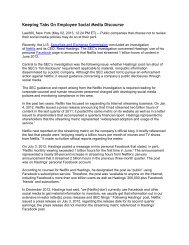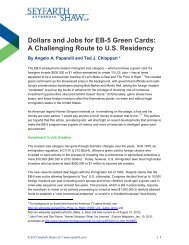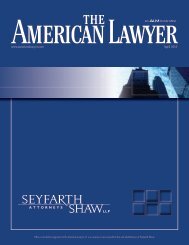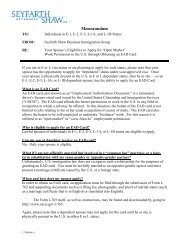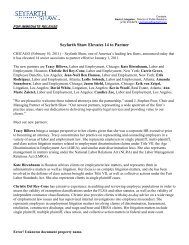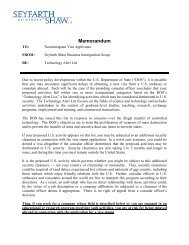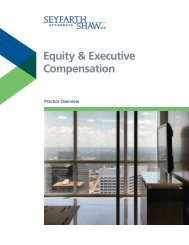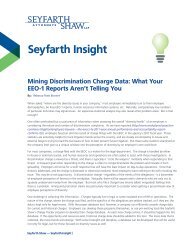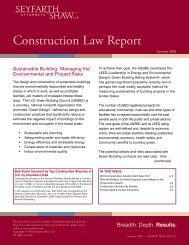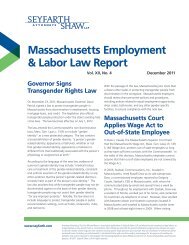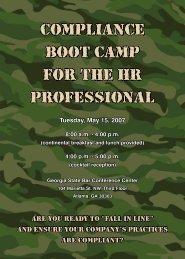Litigating California Wage & Hour and Labor Code Class Actions
Litigating California Wage & Hour and Labor Code Class Actions
Litigating California Wage & Hour and Labor Code Class Actions
You also want an ePaper? Increase the reach of your titles
YUMPU automatically turns print PDFs into web optimized ePapers that Google loves.
does not allow for opt-in class actions. 378<br />
The court also criticized the opt-in procedure as a<br />
device that improperly is used by the defendant to “chip away at the size of the class.” 379<br />
addition, the court attempted to construe its decision as beneficial to class defendants<br />
because an opt-out class binds more potential plaintiffs in those cases where the employer<br />
prevails on the merits. 380<br />
Whatever the merits of this reasoning, the fact remains that trial<br />
courts throughout <strong>California</strong> are now barred from certifying cases as opt-in class actions.<br />
In 2007, however, another court of appeal narrowed Hypertouch. In Estrada v. FedEx<br />
Ground Package System, Inc., 381 the trial court certified an independent contractor<br />
misclassification class but only of certain drivers of certain trucks on certain routes. The<br />
only way to determine who qualified as a class member under the particular class definition<br />
the court adopted was to ask the class members, because no records existed that would<br />
reveal class membership. Accordingly, the trial court authorized the sending of a<br />
questionnaire for drivers to answer under oath to determine whether they qualified as class<br />
members. Those who failed to respond were ultimately deemed not to be class members<br />
<strong>and</strong> were dismissed from the case without prejudice.<br />
The plaintiffs argued that this was tantamount to having certified a class on an opt-in basis,<br />
in violation of Hypertouch. The court of appeal rejected the comparison, noting that the<br />
questionnaire mechanism was not used to opt in to the class action, but merely to identify<br />
drivers as class members. 382<br />
In essence, the questionnaire was used to ascertain class<br />
membership, not to determine whether someone, once identified as a class member,<br />
wished to participate in the class action. In cases where a trial court certified a class that<br />
requires gathering information from putative class members to determine class<br />
membership, Estrada may provide a hook for the defendant to argue that the potential<br />
class must be surveyed to determine who are class members, with all non-respondents to<br />
the survey being dismissed from the case.<br />
E. Wal-Mart Stores, Inc. v. Dukes - The Supreme Court Shifts The<br />
L<strong>and</strong>scape Of <strong>Class</strong> Certification<br />
In June 2011, the U.S. Supreme Court issued its long-awaited decision in Wal-Mart Stores,<br />
Inc. -- U.S. --, 131 S.Ct. 2541 (2011). This opinion transformed Rule 23 law <strong>and</strong><br />
dramatically changed how workplace class actions are structured <strong>and</strong> defended <strong>and</strong>, in<br />
doing so, will also assist employers in defeating certification in wage <strong>and</strong> hour cases.<br />
In<br />
378<br />
379<br />
380<br />
381<br />
382<br />
Id. at 1542-43.<br />
Id. at 1542.<br />
Id.<br />
154 Cal. App. 4th 1 (2007).<br />
Id. at 26 (“discovery was necessary to determine whether in fact there was an ascertainable class”).<br />
Seyfarth Shaw LLP | www.seyfarth.com <strong>Litigating</strong> <strong>California</strong> <strong>Wage</strong> & <strong>Hour</strong> <strong>Class</strong> <strong>Actions</strong> (12th Edition) 82



